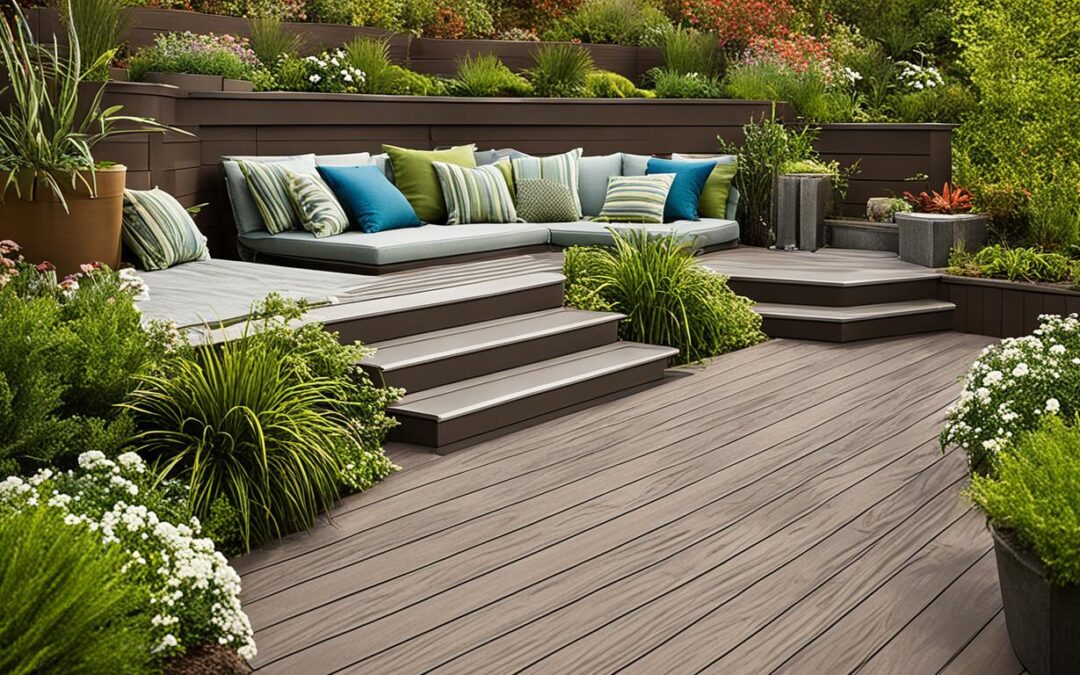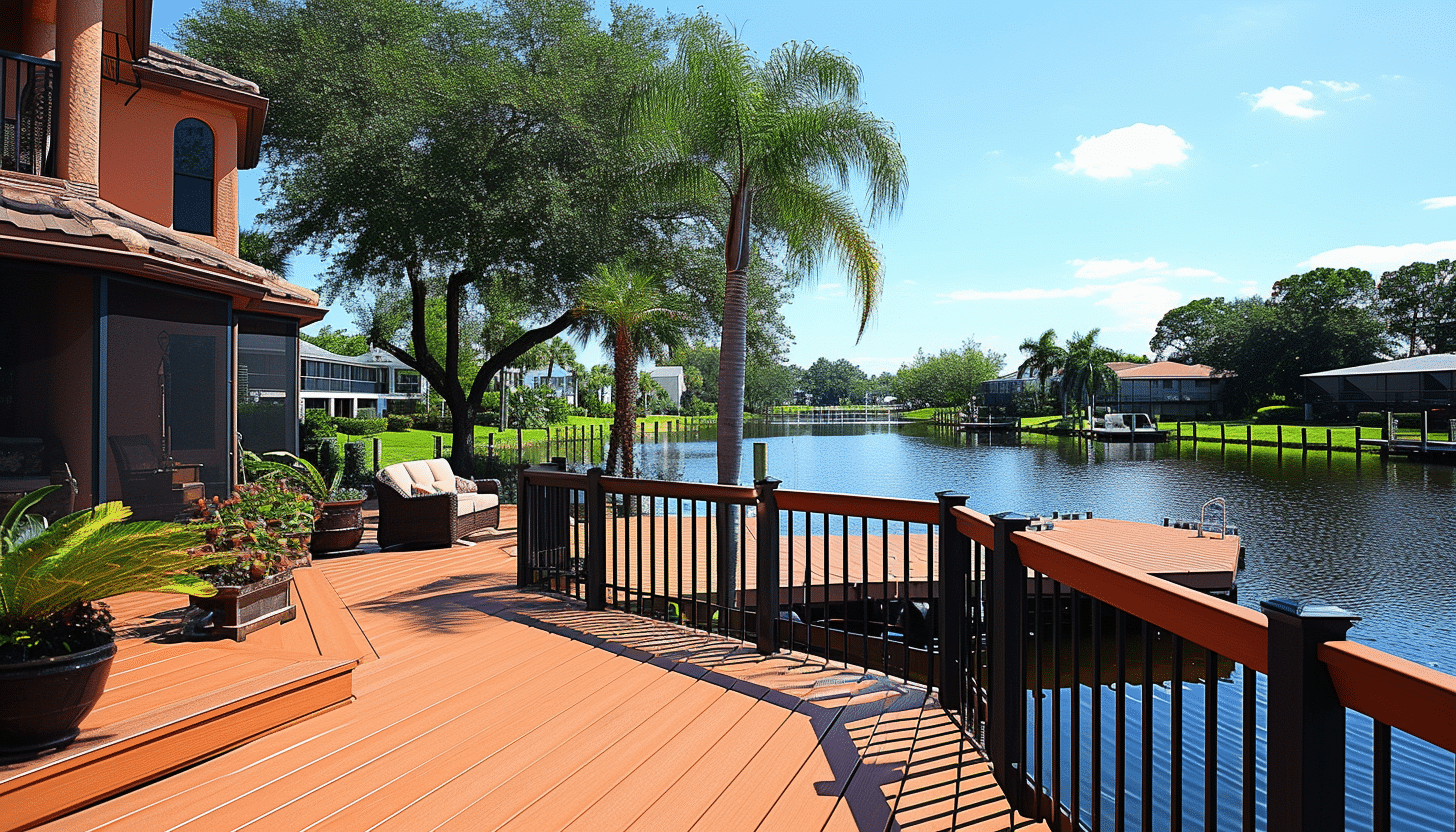In the US, sustainable outdoor architecture is trending in commercial spaces. Businesses focus on eco-friendly designs that marry aesthetic appeal with environmental stewardship. Trex leads with 95% recycled materials for durable, green decking. Moreover, the upkeep of spaces, from cleaning to sealing wooden decks, involves collective responsibility. Additionally, the use of shade structures and native plants not only enhances beauty but also supports local ecosystems, underscoring the importance of sustainable outdoor designs.
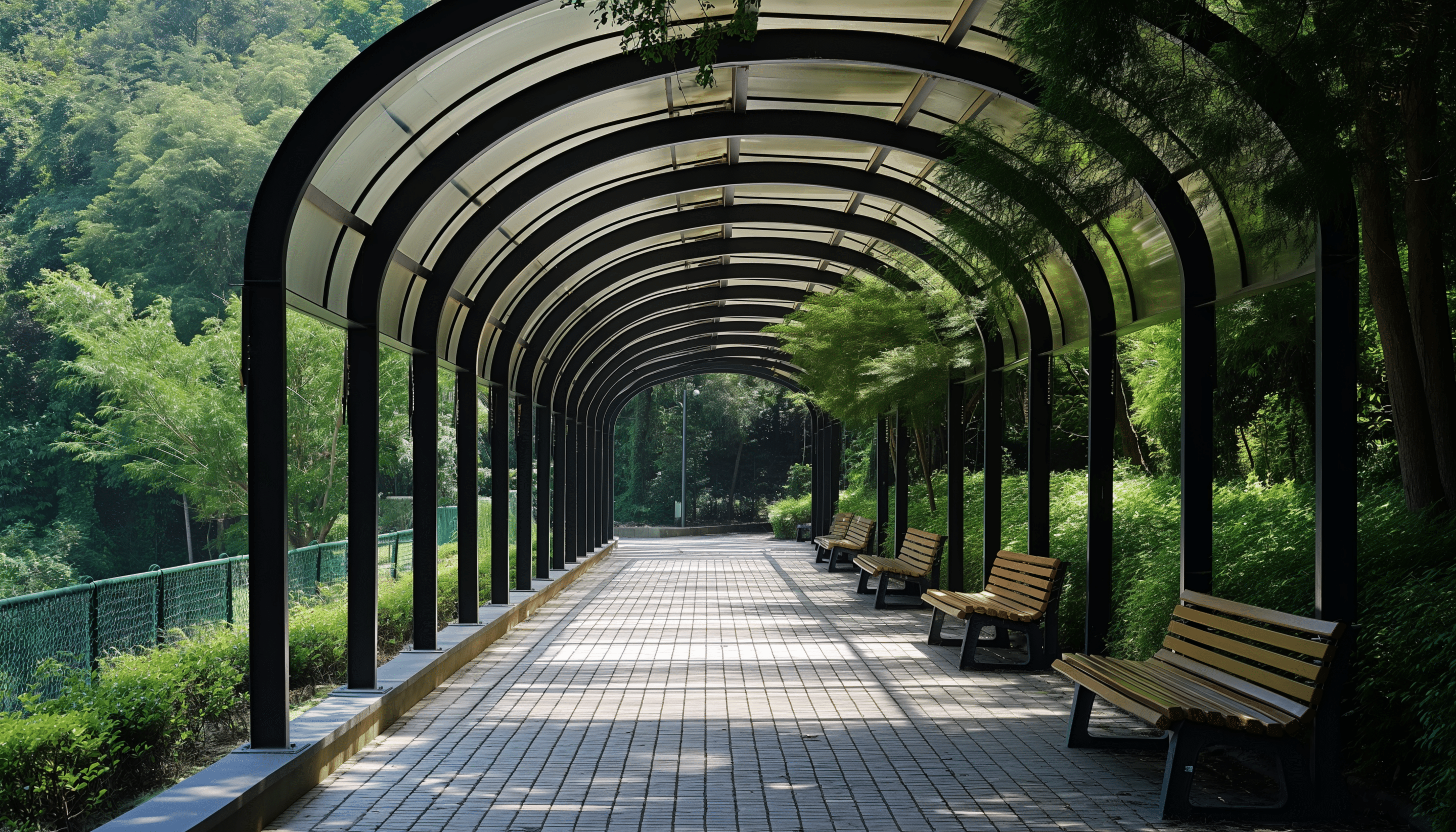
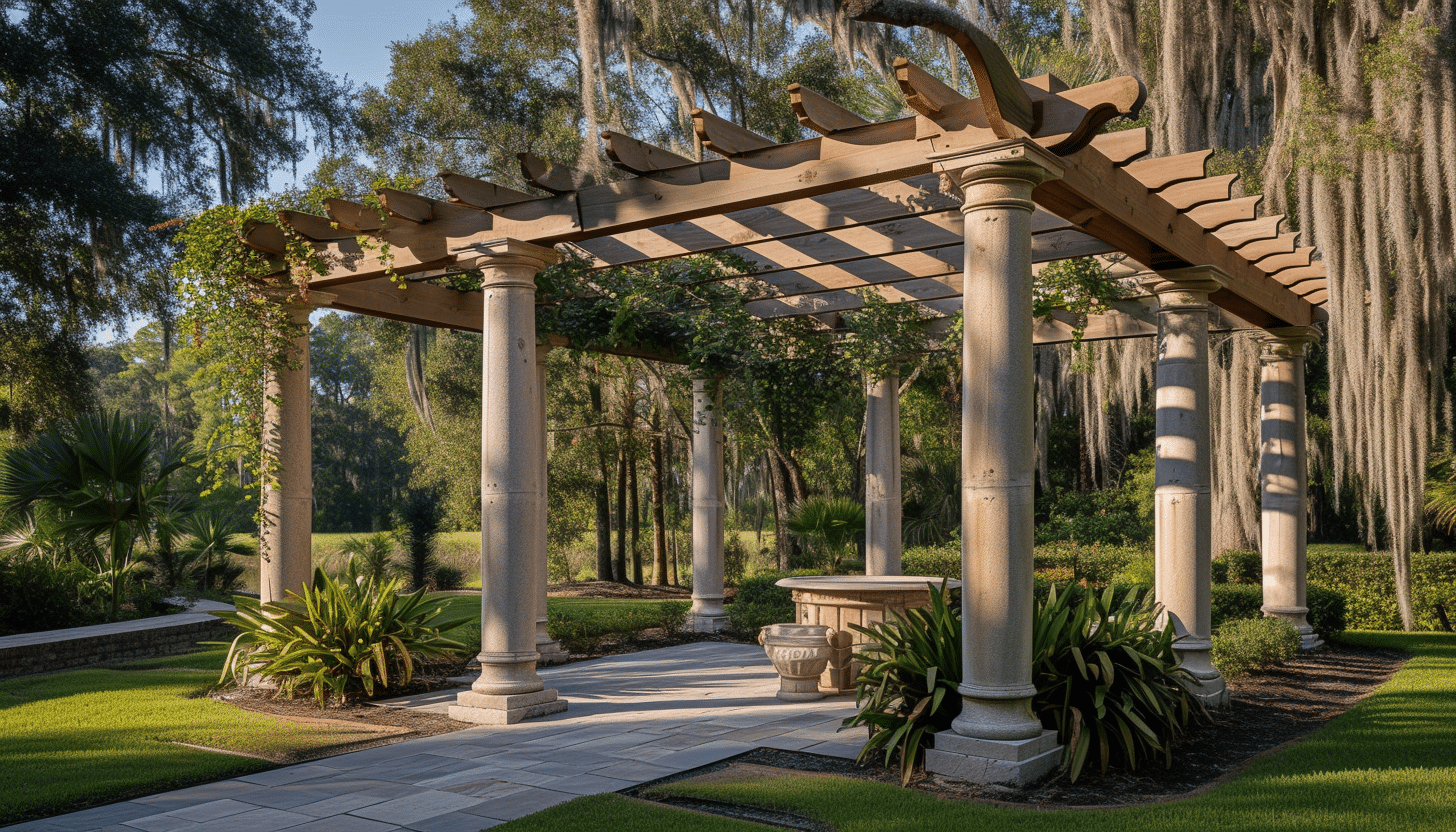
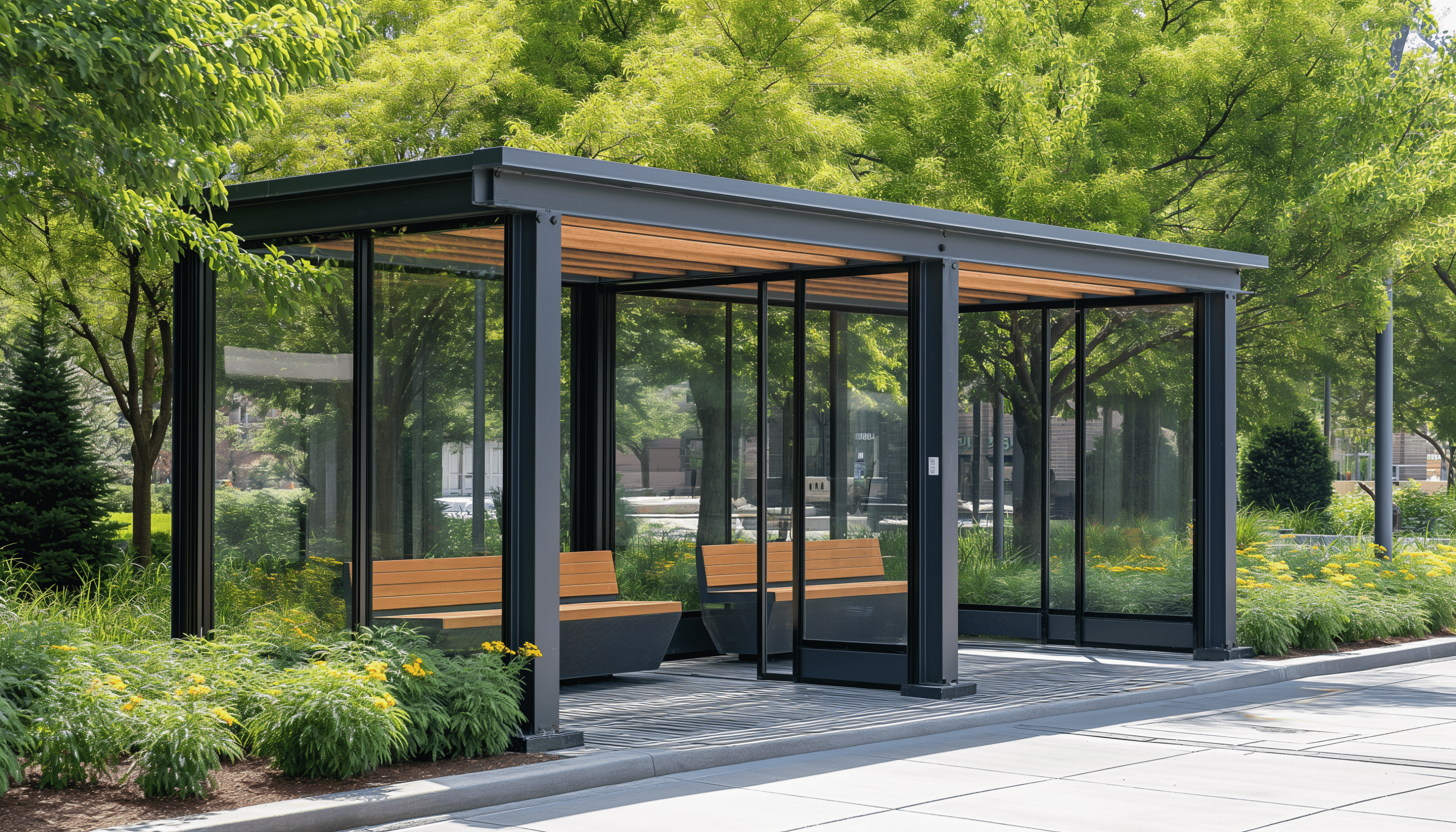
Adopting sustainable practices and eco-friendly options helps us reduce our carbon footprint and create outdoor spaces that are both beautiful and sustainable, suitable for homes, businesses, and public areas. Our ongoing efforts towards eco-solutions ensure that we not only make a difference today but also benefit future generations. While achieving sustainable outdoor architecture can be challenging, it’s possible through creative strategies, dedication, and a solid plan.

Key Takeaways
- Invest in sustainable materials, such as Trex’s green composite decking, which is made from 95% recycled materials.
- Adopt proper deck maintenance routines such as regular cleaning and sealing to increase longevity and maintain aesthetics.
- Create visual and environmental harmony through the integration of native plants in your outdoor patio designs.
- Opt for shade structures like pergolas and awnings to create inviting and sustainable outdoor spaces.
- Promote local ecology and biodiversity by incorporating pollinator-friendly gardens in your landscaping ideas.
- Choose eco-friendly outdoor designs that enhance aesthetic appeal while minimally impacting the environment.
Embracing Green Outdoor Living with Sustainable Materials
The essence of green outdoor living lies in meticulously handpicking resources that vaunt both resilience and sustainability. Fortunately, we’re not short on eco-friendly options that successfully blend aesthetics and functionality while also considerably reducing environmental impact.The Longevity of Eco-Friendly Composite Decking
A highly favored choice in the realm of sustainable landscaping ideas is the eco-friendly composite decking, epitomized effectively by Trex products. Thanks to their high-content usage of recycled materials and minimal upkeep requirements, these decking options champion durability and sustainability.Integrating Permeable Pavers for Environmental Benefits
Permeable pavers represent another monumental stride in green outdoor living. By allowing rainwater to filter through, these paving options significantly reduce runoff and nurture groundwater recharge, facilitating a healthier ecosystem.Local Sourcing and Low-Impact Production Practices
Using locally sourced, permeable pavers cuts down on transportation emissions and boosts the local economy, reflecting our commitment to eco-friendly production. Belgard, a leader in sustainable patio solutions, provides concrete pavers that last 60 to 80 years, embodying our dedication to durable and environmentally friendly outdoor designs. These choices are integral to building a sustainable future, allowing businesses to lessen their environmental impact and create appealing outdoor areas. We’re excited to explore the vast potential of sustainable landscaping further in creating greener, more responsible outdoor environments.Implementing Sustainable Landscaping Ideas
Amid the escalating climate crisis, sustainable landscaping has emerged as a decisive path towards introducing eco-friendly outdoor designs. By promoting biodiversity, conserving water, and endorsing eco-healthy practices, homeowners can effectively transform their outdoor spaces into environmentally-friendly backyard designs. Let’s delve deeper into the essence of specific sustainable garden planning ideas.Utilizing Native Plants for Eco-Conscious Outdoor Spaces
Our commitment to supporting local ecosystems often begins with the cultivation of native plants. Accustomed to the local climate and soil conditions, native plants require less water and care, thereby reducing our reliance on artificial substances and contributing to lower water bills. Moreover, native plants have evolved to support the area’s wildlife, including birds, bees, and other beneficial species, fostering a well-integrated ecosystem right in your backyard.
Eco-Friendly Patio Designs with Rainwater Harvesting
Moving beyond traditional practices, innovative homeowners have started integrating rainwater harvesting systems into their patio designs. A rainwater harvesting system can serve as a source of irrigation for plants and lawns, reducing our reliance on municipal/groundwater. Such practices not only conserve water but also cut down on water bills, promoting a more sustainable lifestyle that aligns with the principles of eco-conscious outdoor designs.Beneficial Inclusion of Pollinator-Friendly Gardens
A pollinator-friendly garden is not only a delight for nature lovers but also a crucial contributor to biodiversity. By attracting bees, butterflies, and birds, these gardens aid in cross-pollination and the growth of new plants. Creating such a space is a meaningful way to support local ecosystems and enjoy watching these creatures up close. Sustainable garden planning goes beyond being a design trend; it’s a vital move towards a greener future. By incorporating these eco-friendly practices in our gardens, we contribute to environmental preservation while crafting beautiful and inviting outdoor areas.Innovative Strategies for Sustainable Outdoor Architecture
Adopting eco-friendly outdoor designs involves a new perspective, recognizing the value of sustainability, and careful planning. Start with key elements like landscaping and decking, favoring water-efficient native plants over water-intensive exotics. Use outdoor structures for natural shade to lessen dependence on energy-heavy cooling methods. Sustainable outdoor design combines aesthetics with functionality, creating harmonious spaces. This approach extends beyond landscaping to all outdoor elements. For example, choosing efficient lighting like LEDs or solar-powered options reduces energy use and enhances outdoor areas, supporting a sustainable future.
| Outdoor Component | Eco-conscious Practice |
|---|---|
| Landscaping | Use of native plants that require less water |
| Outdoor Structures | Installation of structures that provide natural shade |
| Lighting | Switch to LEDs or solar-powered fixtures |
Eco-Friendly Outdoor Designs: Maximizing Efficiency and Aesthetics
Efficient and aesthetic eco-friendly outdoor designs are crucial for sustainability. Achieving this involves choosing durable, elegant materials with minimal environmental impact. Using recycled and refurbished materials in outdoor furnishings is key to enhancing aesthetics while promoting a circular economy. Eco-friendly lighting is also vital, with energy-efficient LEDs and solar options enhancing ambiance without high power consumption. Water-efficient features like rainwater harvesting systems conserve water and cut utility costs. By focusing on both environmental responsibility and style, we seamlessly blend efficiency and aesthetics in our designs.| Elements of Eco-friendly Outdoor Design | Benefits |
|---|---|
| Recycled and Refurbished Materials | Supports circular economy and reduces landfill waste |
| Energy-efficient Lighting | Reduces power consumption and enhances ambiance |
| Water-efficient Systems | Conserves water and reduces utility bills |
| Choosing Plant Life Native to the Region | Reduces water usage and supports local ecosystems |
Conclusion
As we reflect on the journey towards creating eco-conscious outdoor spaces and sustainable outdoor architecture, it’s clear that our conviction goes beyond sustainable products and practices—it’s a concerted commitment to socially responsible design that improves well-being, fosters community interactions, and safeguards our environment.Commitment to Environmentally Responsible Outdoor Design
Embracing environmentally responsible outdoor design isn’t solely about maintaining aesthetics and functionality. It’s an essential piece of our responsibility towards communities and the ecosystem. Besides offering attractive, usable spaces, we’re demonstrating what it means to be truly committed to conserving resources, reducing waste, and promoting ecological balance.Enhancing Community Engagement Through Sustainable Garden Planning
Sustainable garden planning serves as a stepping stone to enhanced community engagement. It invites people to interact with nature and learn about sustainability in more intimate, direct ways. In our design approach, every element—every plant, every piece of furniture, every decorative object—is rooted in sustainability, introduces the community to eco-conscious concepts, and stimulates meaningful dialogues about conservation and stewardship.Future-Oriented Strategies for Eco-Friendly Commercial Spaces
Looking ahead, we advocate future-oriented strategies that set the stage for eco-friendly commercial spaces of tomorrow. By emphasizing eco-friendly materials, conserving resources, and showing responsible stewardship, we’re not just meeting the demands of the present day but also setting an impeccable example for upcoming advancements in outdoor design. This self-imposed commitment to progress ensures our commercial spaces stand as shining beacons of sustainable innovation, showcasing what is truly possible when we commit to a greener future.FAQs
What encompasses eco-friendly outdoor designs for commercial spaces?
Eco-friendly outdoor designs combine aesthetic appeal with sustainable practices. This can include the use of recycled materials, choosing locally sourced products, and including features like shade structures and landscaping that can enhance the space while also benefiting the environment. Companies like Trex are leading the way with green composite decking made from recycled products.
How can we adopt green outdoor living with sustainable materials?
The adoption of sustainable materials for outdoor spaces, such as Trex’s eco-friendly composite decking, permeable pavers, and locally sourced products, all contribute towards green outdoor living. Not only do these materials offer environmentally friendly solutions, but they also ensure the longevity and durability of outdoor spaces.
What are some innovative sustainable landscaping ideas?
Sustainable landscaping ideas generally involve the use of native, drought-resistant plants and rainwater harvesting systems. Including pollinator-friendly gardens also contributes to supporting local ecosystems. Together, these elements help reduce water usage and increase biodiversity as part of a commitment towards more environmentally friendly backyard designs.
What strategies are important for sustainable outdoor architecture?
Sustainable outdoor architecture merges aesthetics with innovation to minimize ecological impact. This can include everything from landscaping and structural design to energy efficiency and rainwater harvesting. The key is to ensure that every aspect of the outdoor space is designed with the environment in mind.
How can we maximize efficiency and aesthetics in eco-friendly outdoor designs?
To maximize both efficiency and aesthetics, outdoor designs should incorporate the use of recycled and refurbished materials, energy-efficient lighting, and water-efficient elements into the design. This not only enhances the overall appeal of the space but also boosts its sustainability.
How can outdoor designs contribute to environmentally responsible design practices?
Environmentally responsible designs emphasize sustainable garden planning, eco-friendly materials, and techniques that conserve resources. By incorporating these elements, outdoor designs can foster community engagement, support local ecosystems, and set a precedent for future eco-friendly advancements.
Source Links

I’m Elliot Bock, an expert at Total Site Amenities, specializing in transforming outdoor spaces. With a focus on aesthetic and functionality, I work closely with project managers and HOAs to tailor each project to their unique needs. My approach simplifies the complex, making me a trusted partner in crafting personalized outdoor solutions. My passion lies in enhancing community spaces, ensuring every project delivers both beauty and practicality.

